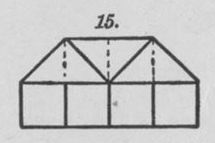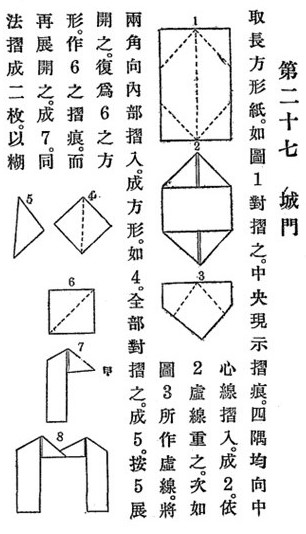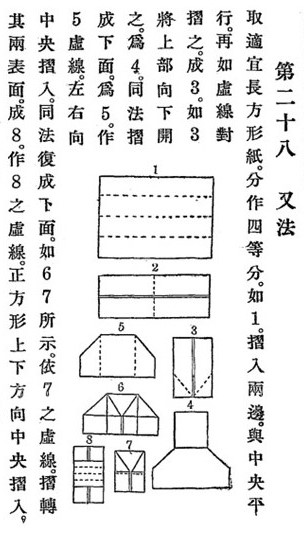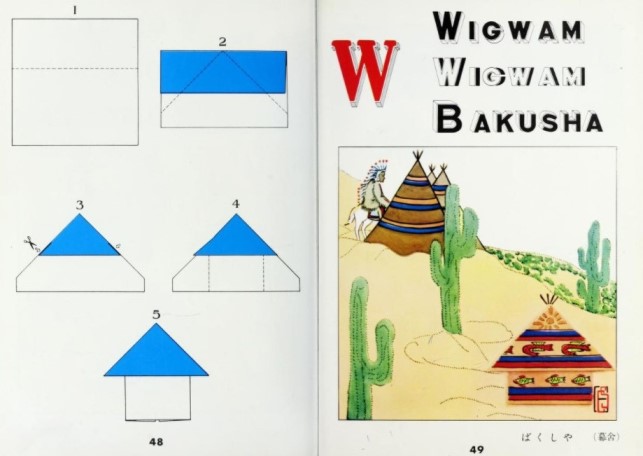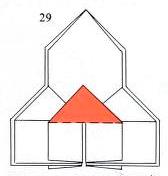| The Public Paperfolding History Project
Last updated 13/12/2023 x |
|||||||
| Miscellaneous 2D Representations of Buildings and Structures | |||||||
| This
page attempts to record what is known about the origin
and history of 2D Buildings and other structures. Please
contact me if you know any of this information is
incorrect or if you have any other information that
should be added. Thank you. There is a separate index page for 3D Representations of Buildings and Structures. ********** The Japanese House - 1878
********** The House - 1882 onwards
********** The Country House - 1907 This design is mentioned in an article titled 'El trabajo manual escolar' by Vicente Casto Legua in the January 1907 issue of the Spanish magazine 'La Escuela Moderna' which was published in Madrid by Los Sucesores de Hernando under the names of 'Tienda de campana' (tent) and 'casito de campo' (country house). No illustration of this design is given and the instructions in the text are not clear enough to enable me to reproduce the design. ********** 1914 'Zhe zhi tu shuo' (Illustrated Paperfolding), compiled by Gui Shaolie, which was published by the Commercial Press in Shanghai in Ming guo 3 (1914) contains several 2D representations of typically Chinese memorial /ceremonial archways and columns. ********** 1917 T 'Xu Zhe zhi tu shuo' (More Illustrated Paperfolding) by Yongxiang Shi, which was published by the Commercial Press in Shanghai in 1917 contains two designs for 'City Gates'. Made in two parts which are then glued together.
**********
********** 1951 Diagrams for what is perhaps best described as a house (but called a Wigwam), made with the aid of cuts, appear in 'Origami: Folding Paper for Children' by Claude Sarasas, which was first published by Kodansha in Tokyo in 1951.
********** The Japanese Church - 1958 onwards
********** |
|||||||

